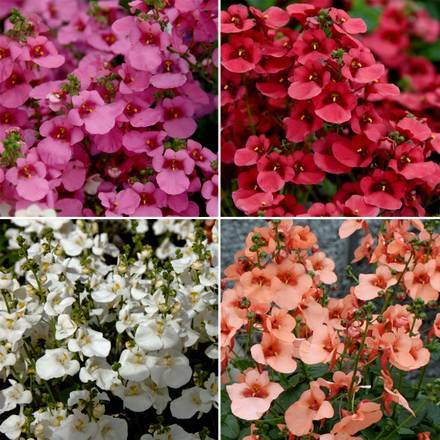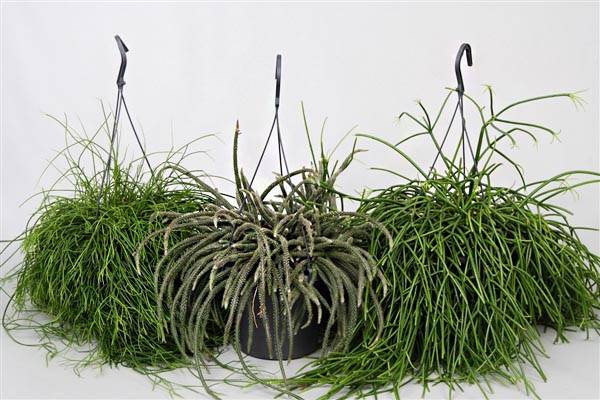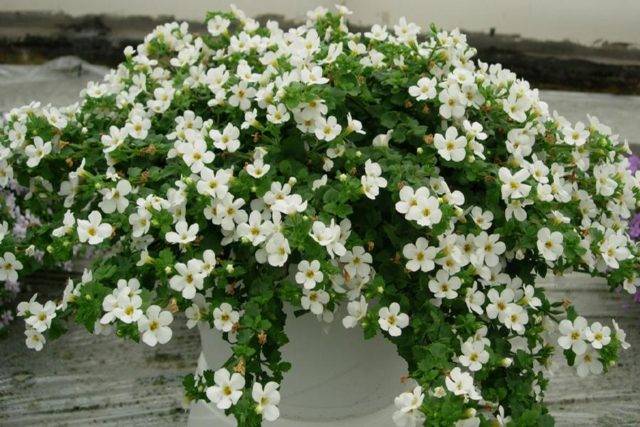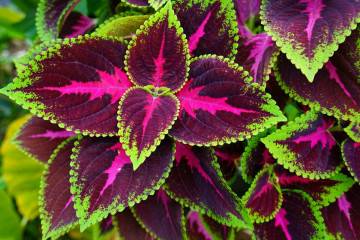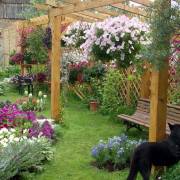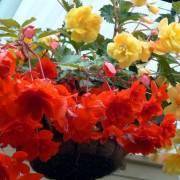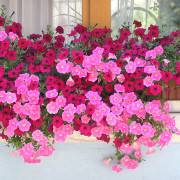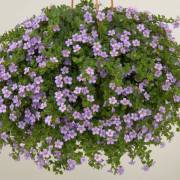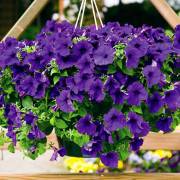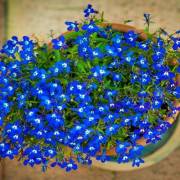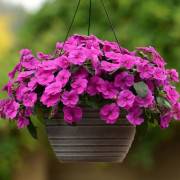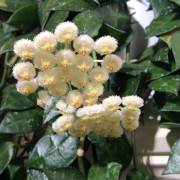Diascia is a perennial ampelous plant
Content:
Diascia is a flowering delicate plant from the Norichnikov family. Refers to both annual and perennial crops. The place of growth is considered to be South Africa. The flower itself is quite unpretentious, however, for a more intense flowering, you need to take into account the features of the area where it is planted.
Diascia is a perennial ampelous plant
The plant belongs to a number of undersized. In the wild, it can reach up to 1 m in height, but in gardens it grows only 30-60 cm.
Ampelous diastia blooms well in the open field, so many gardeners recommend planting it there. The flowering period is from late spring to almost the first frost. The duration of the first flowering is 1-1.5 months. Closer to autumn, even more buds form on the bushes than in summer.
The minimum correct care will provide the flowerbed, the pot with abundant flowering.
Common decorative species and varieties of diastia
The bearded diastia is a short plant that reaches a height of no more than 30 cm. It has small dark green leaves, which forms a wide bush. Blooms all summer. There are many inflorescences on the bush, but they are small. The middle is usually yellowish, and the edges of the petals are light pink. Most often, this type of annual, you can buy seeds in the store.
The most popular varieties also include:
- The pink queen. It has light pink flowers that have a slight milky tint;
- Basia is another variety with bright pink inflorescences, which are quite large in size, about 2 cm. The flowers themselves are velvety;
- Ruby Field is a breeding variety that resulted from the crossing of two diasses: bearded and heart-shaped. The flowers have a characteristic color - a dark center, smoothly turning into the white edges of the petals. Cultivation of this variety can take place both in the open field and in pots;
- vigilant diastia is great for growing in pots. Thanks to its hanging shoots, it will also look advantageous in a pots. Blooms from June to September.
Different types of diassage are suitable for different types of planting. You just need to choose a suitable variety, and the beautiful club will delight those around you all summer long.
Diastia in landscape design
You can grow diastia in a garden or at a summer cottage. The plant is well suited for decorating flower beds, flower beds, playgrounds or garden paths. Diastia can be planted between bushes of other plants to fill in the gaps.
In addition, the flower can be grown as a low border or used as a contrast.
Diastia flower: growing from seed, propagation by cuttings, care, flowering
There are several breeding options:
- seeds;
- cuttings.
The process of growing ampelous diastia from seeds begins in February, only in this case the flower will bloom in July. For sowing, a container with purchased land is used.
Boxes with seedlings must be covered with glass, removed to a warm place. The first shoots will appear after 15-25 days.
After the appearance of the first leaves, crops must be dived. All care for seedlings consists only in regular watering.
Planting diastia in open ground and caring for the plant
In spring, cuttings need to be rooted in a damp substrate. After 30-35 days, the top must be pinched. After the cutting takes root, it can be planted in the area. To do this, you should choose a well-lit place that is protected from strong winds.
This flower grows well in open areas, it is unpretentious in care, but it is worth adhering to some recommendations:
- on the hottest dry days, the plant needs to be provided with abundant watering, while it is worth taking care of drainage, since moisture stagnation is very harmful to the roots;
- fertilizer should be applied every 2-3 weeks. It is worth choosing those complexes that are designed specifically for flowering plants.
Diseases and pests
Diastia is quite resistant to many diseases and pests, but in some cases there is a risk:
- if the flower grows in a house with dry air, then whiteflies or aphids may appear on the leaves. To combat them, it is recommended to use insecticides;
- large amounts of water can cause fungal diseases such as stem rot. A transplant is needed for salvation;
- if creeping plants are on the ground, then there is a risk of snails, slugs. In this case, you just need to tie the shoots to special supports.
Wintering diastia
The diastia planted in the ground is dug up for the winter, transplanted into a pot and removed to a bright, well-ventilated room. The temperature in the room should be around 10-12 ° C. In winter, the plant goes into a kind of hibernation, so there is no need to water it.
If winter care is not suitable or seems difficult, then diastia can be planted as an annual, cutting off all the tops in the fall, and sowing new flowers in the spring.
Other perennial ampelous plants
Ampel plants are decorative flowers that help decorate flowerpots, balconies, windows or terraces. This type is perfect for decorating summer cottages, apartments. Flowering plants can become a real fireworks of colors.
Ampel cactus
Rhipsalis is a cactus plant species that has almost 50 species. Most of them are very unpretentious to care for.
Ampel cactus will look spectacular in hanging baskets or flowerpots.
At home, the climbing cactus chilocereus is popular. It is a liana-shaped representative with snow-white flowers that have a pleasant aroma.
Tuberous begonia
The most famous representative of the ampelous group. How to plant tuberous begonia? Growing begonias can be done in a flower pot, box, flowerpot. To do this, the tuber is placed in a container and covered with earth.
Periwinkle ampelous
Periwinkle ampelous is a creeping dwarf shrub, a perennial herb with beautiful flowers. It grows and blooms effectively in well-moisturized soil. Such a flower will look good if you plant it around the trunks of garden trees.
Bacopa
Many gardeners are concerned about the question: are Bacopa annuals or perennials? The description of the bacopa plant states that it is a perennial crop with small flowers. The length of the shoots can reach 70 cm, and the height is 10-15 cm. Bacopa blooms for a long time and strongly - from late spring to the first frost.
Bacopa blue
Bacopa blue is native to South America, grows in the wild in more swampy places, on the banks of water bodies. Blooms profusely. Sowing is best done in March, and from mid-May, seedlings can be transplanted into the ground.
Bacopa pink
The plant got its name due to pink, lilac, lavender leaves. Often used to decorate aquariums. This plant looks very advantageous against the background of other greenery, which is why many aquarists love it so much. With the right lighting and temperature, the flower will bloom quickly.
Bacopa Blue Avalanche
Even a beginner can grow the Blue Avalanche bacopa variety. She has flowers of a lilac or blue hue. It is a beautiful ornamental plant with hanging shoots. One of the advantages is long flowering, so many gardeners choose it, as well as the ampelous bogotu flower, as it is very similar to bacopa.
Bacopa lilac
Lilac Bacopa has many small flowers, lush dense foliage, which reaches almost 45 cm in length by mid-July. The plant blooms well even in the shade. The most popular variety is Scopia Double Lavender Bacopa with a beautiful lavender shade.
Bacopa Gulliver Pink
Bacopa Gulliver Pink is a flower with unusually large inflorescences.
Bacopa Caroliniana
Bacopa Caroliniana reproduces rapidly and is therefore well suited for aquarium cultivation. It is best to keep the temperature in it around 20-25 ° C.
Thus, as an ampelous flower, you can choose not only diascia, but also many other options that are not inferior to it in beauty. The main thing is to correctly determine the planting time and provide the plant with proper care.

